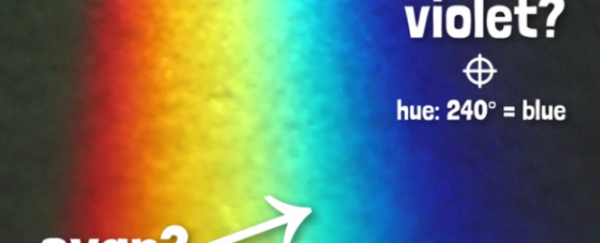Roses are red, violets are blue, and purple in a rainbow is a supernumerary hue. What does that even mean? Watch the latest episode of MinutePhysics to find out.

The rainbow, as we know it, is red, orange, yellow, green, blue, indigo, and violet - ROYGBIV. But where exactly does violet start and finish, and isn't it more of a blue colour anyway? And what exactly is that really prominant blue-green cyan colour between the 'green' and the 'blue'? Wouldn't it be more accurate to say the rainbow is red, orange, yellow, green, cyan, and blue? Well, turns out we used to, says Henry Reich in the latest episode of MinutePhysics, but we just forgot.
In the 1660s, when Isaac Newton first saw a rainbow of light split by a prism object, he labelled the colours as red, orange, yellow, green, blue, indigo, and violet. The thing he called the blue was actually that blue-green cyan colour, and the thing he called violet was more of a dark blue. Purple, magenta and hot pink were left out of his rainbow labelling altogether. Why? Because a rainbow from a prism is fundamentally very different from a rainbow in the sky.
When you look at a rainbow of light split by a prism, you won't see any purple or pink, because they're only created when you can mix two colours from different ends of the rainbow colour scale. So why do some sky rainbows look like they have pink and purple in them? "I suspect sometimes it's an optical illusion whereby nice, deep blues in small amounts surrounded by a lighter colour appear purplish to our eyes," says Henry in MinutePhysics. "However, sometimes purple and pink really are there."
The secret is that a rainbow in the sky is actually a rain-disc, each colour of sunlight reflects back in a bright rimmed disc, and when you combine all of these discs together, you get one big white disc with a colourful disc. And then all those raindrops hanging around start to interfere as tiny prisms, and this gives each disc multiple rings. And this is where the wonderful phrase, 'supernumerary rings', comes into play. We'll let Henry explain that one, and why it has anything to do with purple, in the latest episode of MinutePhysics above.
Source: MinutePhysics
